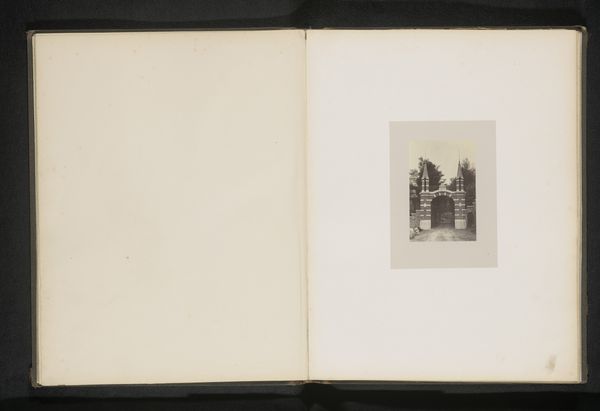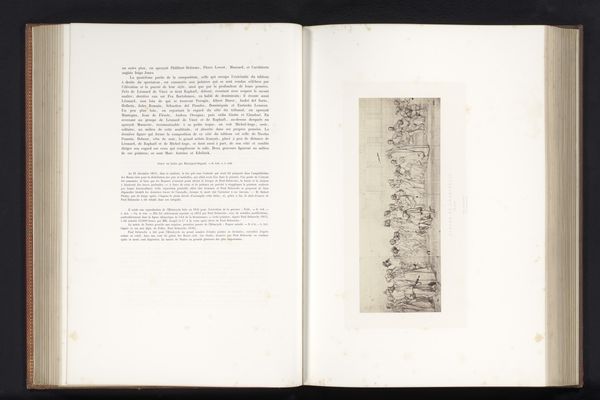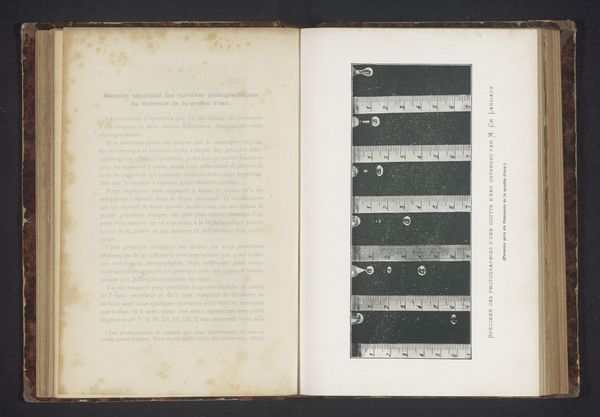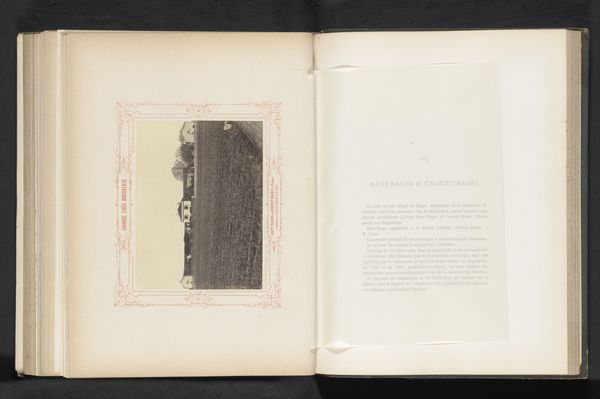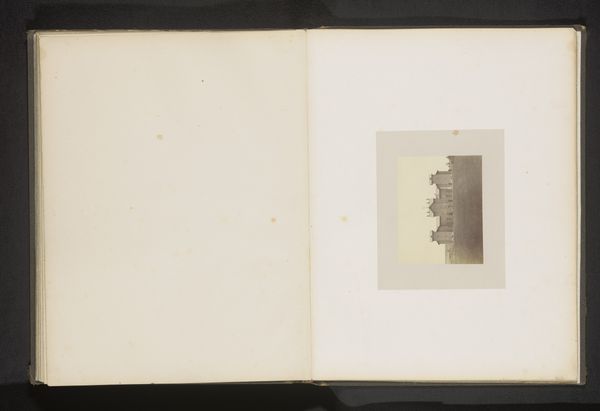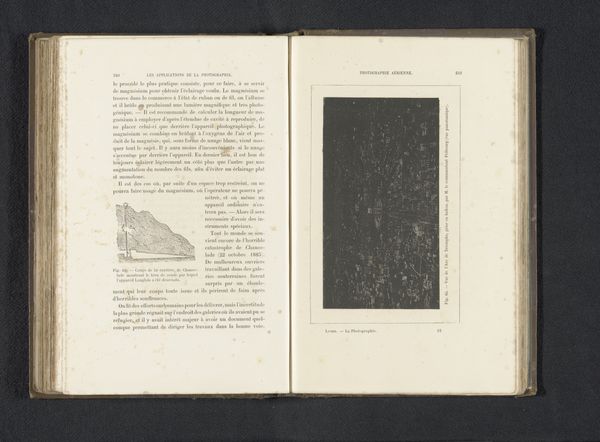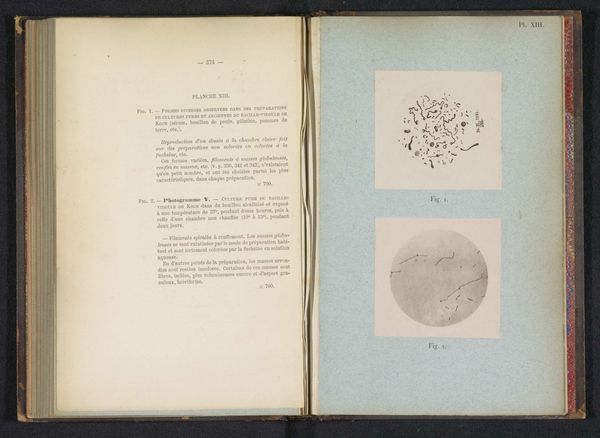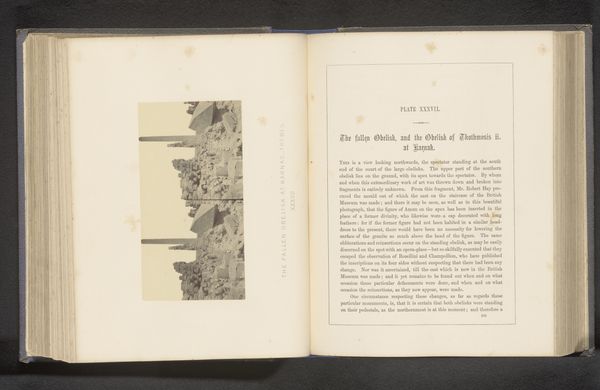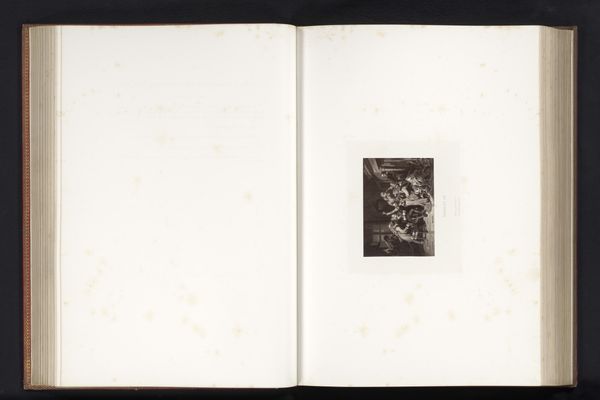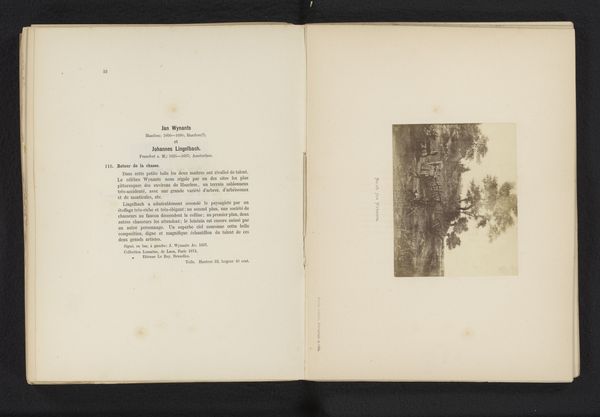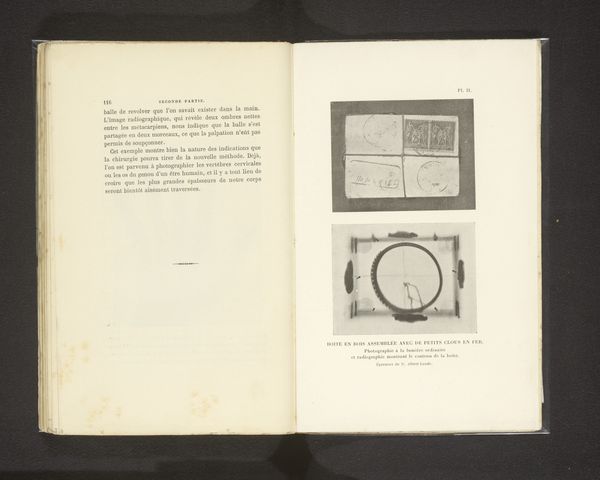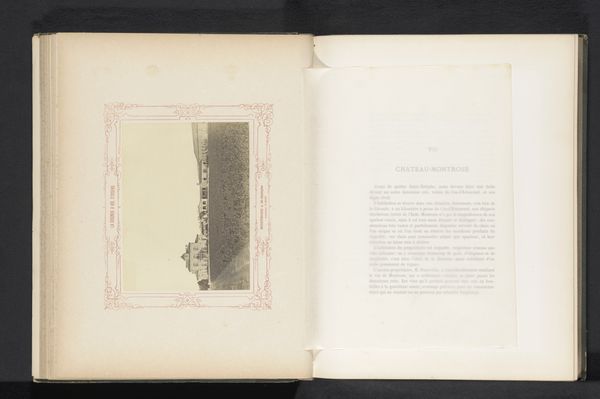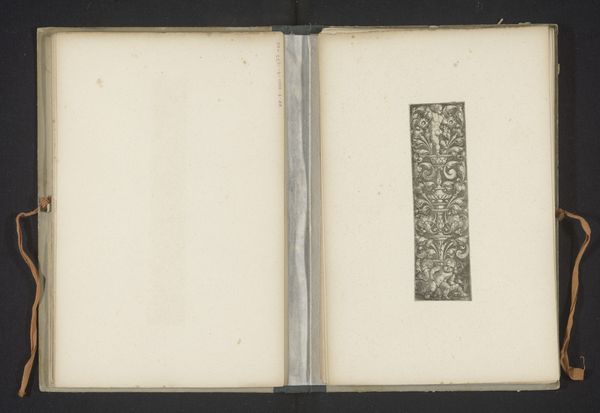
drawing, print, paper
#
portrait
#
drawing
#
paper non-digital material
# print
#
paper
#
modernism
Dimensions: height 50 mm, width 101 mm
Copyright: Rijks Museum: Open Domain
Curator: The artwork before us, simply titled "Groepsportret," or Group Portrait, appears within a publication dating from before 1901 and made by Edouard Adelot. The visual aspect is achieved through print on paper. Tell me, what are your initial thoughts about the portrait itself? Editor: Initially, it feels shrouded in an air of formality, doesn’t it? These figures arranged one atop another create an unusual sort of hierarchy...an odd sense of compressed social strata on the page. The gray of the reproduction amplifies this rather antiquated mood for me. Curator: Indeed, there's an almost spectral quality, with the faces softened by the printmaking process, losing some of their sharp detail. To me, this softness allows an interpretation beyond their specific identities. Instead of striving for individual realism, it reaches toward a statement about the group consciousness—the shared identity perhaps. Editor: That reading certainly makes a potent counterpoint to how group identity often works to obscure or suppress the individuals it encompasses. There's a clear power dynamic happening—it reminds me a bit of genealogies and bloodlines often documented to preserve patriarchal power in Europe at the time. This book presents, therefore, a question: does it uphold or challenge the values of its time? Curator: Well, there's a strange tension for me...the orderly arrangement, yet the fuzziness which invites one to almost lose sight of some people...it feels both intimate and detached. A kind of nostalgic melancholia, almost. As if these were figures receding into the past even as they were immortalized in print. Editor: The notion of receding into the past rings especially true when considering photography's development at that moment. Think of figures like Muybridge capturing bodies in motion to grasp temporal existence. This portrait strikes a discordant note when we consider temporality... especially in a work meant to resist mortality. How fascinating. Curator: Exactly. And I think perhaps that's its lasting power: that simultaneous dance between documentation and ambiguity. One leaves wondering who these figures were, not just factually, but on an individual level. Editor: Absolutely. It is, as you said, an invitation to consider time and meaning while we ponder a fascinating glimpse into someone else's history.
Comments
No comments
Be the first to comment and join the conversation on the ultimate creative platform.
